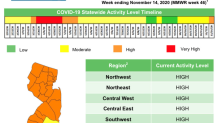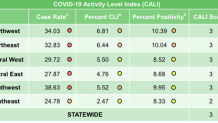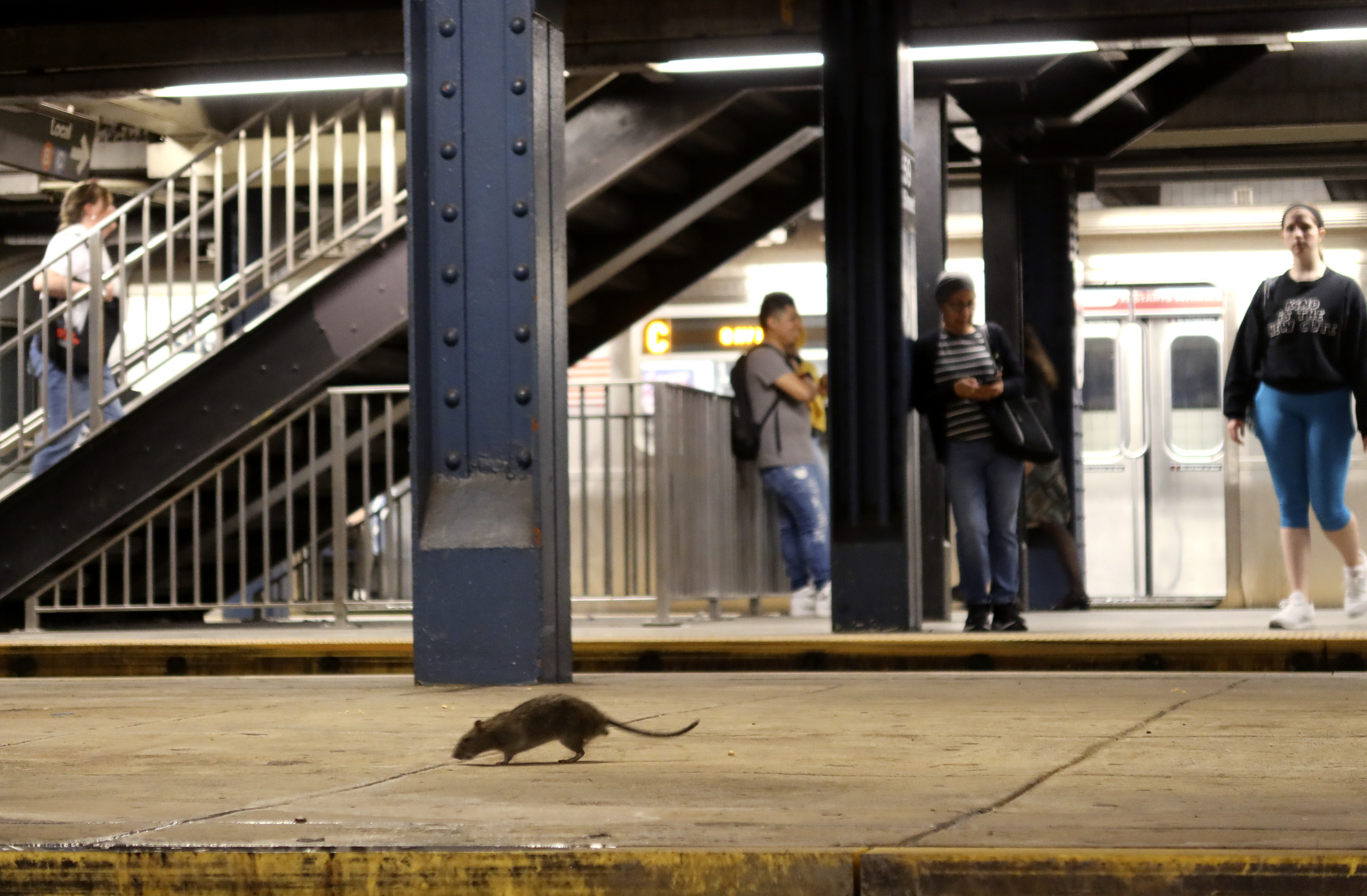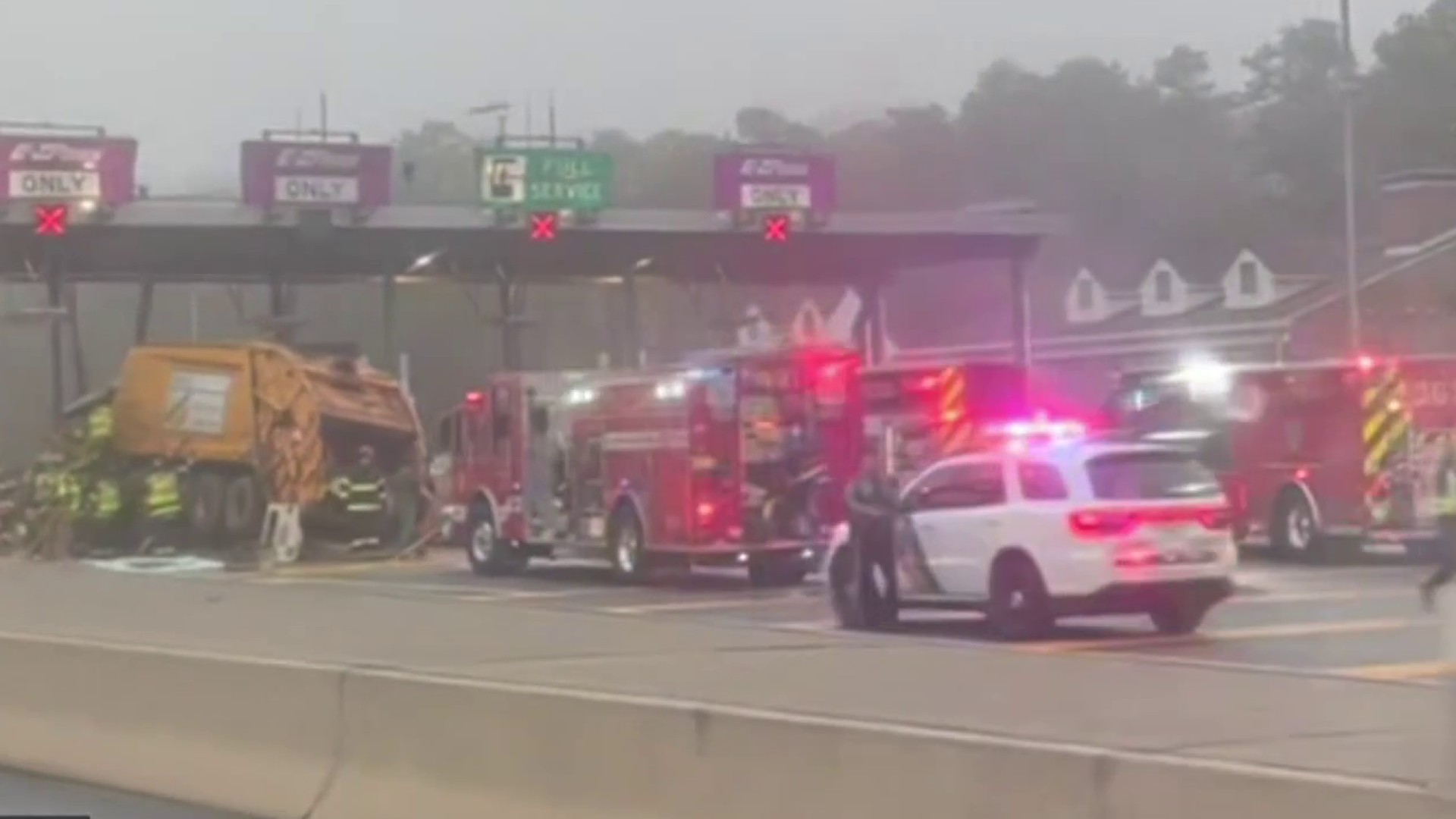What to Know
- Gov. Andrew Cuomo is preparing to transition NYC to a micro-cluster orange zone, which bans indoor dining, closes gyms and salons and applies houses of worship restrictions in addition to school closures
- Mayor Bill de Blasio says he believes that orange zone crackdown will fall on New York City the first week of December, based on the latest data; he says it's not a matter of "if" but "when"
- New Jersey has been facing steeper upticks than New York; Gov. Phil Murphy says the next months will be brutal, but he expects 130,000 doses of Pfizer's vaccine around Christmas if FDA approves use
New Jersey Gov. Phil Murphy says he's uncertain as to whether he will be able to avoid another total shutdown as his state's COVID rates soar to May highs. He's hopeful as the prospect of an effective vaccine draws ever closer. But Murphy says he's confident in at least one thing for sure.
"The next two or three months are going to be brutal. It is going to get unequivocally worse," the governor said Friday. "We're in a vortex of cold weather. It's getting darker. And you've got one holiday after another."
The last month has already been brutal for New Jersey -- and Newark has seen its positivity rates nearly double the state's soaring positivity rates, which topped an "unacceptable" 10 percent earlier this week. The state's health commissioner said it was up to 11 percent Friday, the same day Newark's latest rules go into effect.
New Jersey's largest city of Newark has been particularly hard-hit by the latest surge, prompting Mayor Ras Baraka to implement stricter local restrictions than the statewide ones Murphy has unveiled in recent weeks. The most stringent of those took effect at 8 p.m. Friday, when streets leading into the East Ward neighborhoods (ZIP code 07105) were shut down -- and proof of residence or essential business is now required for those traveling in the area past curfew.
The closures last from 8 p.m. to 3 a.m., as the city tries to get COVID positivity rates inside the Ironbound under control, from their rate around 41 percent currently. Right now, it's just a day experiment. But harsher restrictions appear on tap for Newark in the coming days, including a 10-day shutdown starting next week.
“We are, from Wednesday before Thanksgiving to Dec. 4, going to lock the city down,” Baraka said in a radio appearance on WBGO 88.3 FM’s Newark Today Friday. “We want people to shelter in place. We only want folks to come out for essential purposes. Do not go outside if you don’t have to. Don’t mingle with other people if you don’t have to. Stay (with) your family in your immediate household.”
News
Baraka urged residents to only go outside if absolutely necessary. It wasn’t immediately clear how the city of 280,000 would enforce the new restrictions, particularly for the Thanksgiving holiday.
Nearby Hoboken also debuted a new mitigation measure Friday. Businesses like restaurants, gyms and salons are now required to secure customers' contact information and record arrival times to assist with contact tracing efforts. Take-out, delivery, grocery stores and other businesses where people don't have prolonged contact are exempt from the new mandate.
Contact tracing has been a frustrating matter for Murphy across the board in New Jersey. He has cited indoor youth hockey as a key COVID spreader -- and said recently only 60 percent of parties involved were cooperating with contact tracers.
That only worsens a behemoth threat that continues to magnify by the day.
The state's hospitalizations are at their highest levels since late May and increasing daily by the hundreds, officials said Friday. Daily deaths are rising. New daily cases have twice broken previous pandemic highs in just the last week alone. Asked Thursday if he felt he could avoid another full shutdown, Murphy said, "We'll shut down if we think by doing so we will directly impact transmission. We look at all of our options all the time and we'll continue to."
His health commissioner, citing predictive models, warned the state's daily case toll could double to 8,000 or 10,000 by December or January "if we did nothing."
Even just 50 percent compliance with social distancing and facial coverings would significantly help beat back the increases, Judy Persichilli said. That includes taking precautions even with members of one's own family, she says -- a cautionary note of utmost importance with Thanksgiving just six days away.
Schools remain open across the state, unlike those in New York City, which moved all-remote indefinitely as of Thursday amid parents' protests. Like New York City, schools have not contributed to any significant spread in New Jersey.
State data suggests schools may want to consider moving all-remote in New Jersey anyway. According to the state's latest COVID activity level report, New Jersey hit an orange or "high" level of spread as of last week. That hasn't happened since the middle of May. That designation suggests schools consider all-remote learning. If it turns red, all-remote is mandatory and immediate.

The color designations are based on three rolling seven-day metrics: case rate, emergency visits for COVID-like illnesses and percent positivity. The case rates for all but one of New Jersey's six regions are already red (see below).

Still, Murphy reiterated as recently as Friday he didn't plan to close schools.
"I don't think there are any structures inside that are safer than our schools," he said.
That's been the story in New York City too -- which is why Mayor Bill de Blasio faced extensive criticism from parents and local political leaders over the shutdown, which tied to a 3 percent citywide positivity rate threshold set months ago to avoid a strike from the city's largest teachers' union. That same metric, which many argue is a poor barometer of in-school risk given an 0.19 percent in-school positivity rate, won't solely apply to the reopening of in-person learning.
It's not clear when that will happen, though de Blasio said Thursday he expects to announce reopening standards before Thanksgiving after consultation with the state. He has said he hopes the closures will last just a few weeks.
The shutdown came days after the city's quarterly option for remote-only parents to opt back in to blended learning ended. According to city data released Friday, about 35,000 students who previously were all-remote had chosen to return in person, bringing the total who want to be in schools above 300,000. It's still less than a third of all New York City public school students, but the share is rising.
Now those families will have to wait a bit longer.
Even Dr. Deborah Birx, the coordinator of the White House Coronavirus Task Force, appeared to find the New York City school closures questionable -- though her response was more subtle than those from other critics.
When asked by CNN Friday if she thought the shutdown was a good call, Birx said, "Europe was willing to sacrifice restaurants and bars to maintain their schools."
Daily Percentage of Positive Tests by New York Region
Gov. Andrew Cuomo breaks the state into 10 regions for testing purposes and tracks positivity rates to identify potential hotspots. Here's the latest tracking data by region and for the five boroughs. For the latest county-level results statewide, click here
Source: ny.gov
It appears restaurants and bars are next on the chopping block for New York City anyway via Gov. Andrew Cuomo. And the crackdown will come soon. In his weekly radio segment Friday, de Blasio said he expects it the first week of December, based on the latest numbers and projections. Cuomo says a lockdown by that timeline isn't guaranteed, but will be triggered based on what the city's positivity rates look like -- which he believes will be heavily influenced by Thanksgiving activity.
"It's fully dependent on what people do. I'm not going to guess and I don't have a crystal ball, except to say be very, very careful," Cuomo said.
Cuomo first sowed the seeds of takeover Wednesday when he announced he would transition the entirety of New York City to a micro-cluster orange zone if the citywide seven-day rate hits 3 percent and stays at 3 percent for 10 straight days. State reporting of that metric differs from city data. As of Friday, New York City held at 2.52 percent, by state data -- and has not yet hit the first of what will have to be 10 days of 3 percent or higher. Other regions within the state hold a seven-day rolling rate well above 3 percent, including Long Island, and the Mid-Hudson area, though Cuomo has not imposed sweeping orange zone restrictions there.
Under orange zone rules, schools move all-remote, a moot point now for public schools but one that would affect private and charter schools, which are not subject to de Blasio's shutdown. There is a "test out" option, though Cuomo said he would have to devise a new formula for NYC given the sheer student volume. Expect that to be a key component of returning in-person learning at some point.
Orange zones also ban indoor dining and close gyms, salons and other high-risk nonessential businesses. It caps houses of worship capacity at 33 percent and limits social gatherings to 10 people, the latter of which has already been implemented statewide by gubernatorial order ahead of the holidays.
While the city hasn't hit Cuomo's threshold yet, de Blasio says it's "just a matter of time," given the stark case increases over the last month. The seven-day daily case average topped 1,300 Friday for the first time since May 6; it has risen almost every day since Oct. 29.

"I don't think it's an 'if' the city is going into an orange zone. It's 'when.' By any normal count, just looking at the state's own number system, we're talking a week or two before we're in that orange zone status," de Blasio said Thursday. "I'm sorry to say that, but that's the blunt truth."
In the meantime, he urged parents to sign consent forms to have their children tested as they await news on new standards.
The concept of a sweeping New York City orange zone raises core questions about the basic premise of Cuomo's oft-touted micro-cluster strategy. He has said, and did so again Thursday, that the goal of the approach is to apply risk-based restrictions to narrow geographic areas to stamp out clusters. That helps avoid community spread and extensive economic disruption, he says; it also maximizes personal responsibility when people feel the problem is on their block.
New York City has a lot of blocks. Test any given neighborhood in the five boroughs, and you'll find many with positivity rates below that 3 percent threshold. You'll also find many with much higher positivity rates. The boroughs alone range extensively on positivity rates, from a low of 1.9 percent in Manhattan to a high of 4.2 percent in Staten Island, according to the state's latest data.
The suggestion may reflect more of an effort to contain a sprawling pandemic that once again is surging out of control across the country -- and at the most inopportune time. Coronavirus cases are on the rise in all 50 states. The national death toll topped a quarter-million this week and the United States set another new single-day case record Friday as it topped 194,000 for the first time.
The CDC now projects that "newly reported COVID-19 deaths will likely increase over the next four weeks, with 7,300 to 16,000 new deaths likely to be reported in the week ending December 12, 2020."
While New York, including and especially the city, has fared much better than virtually every state amid the latest U.S. COVID surge, Cuomo has warned for weeks the numbers will continue to climb -- a consequence of the domestic and international climate, colder weather and the long-dreaded holiday travel threat.
About 10 percent of the city's total COVID cases have stemmed from travel; Cuomo has implemented extensive measures like quarantine orders and a new entry test policy for travelers to New York and locals who travel out and return. People will travel for Thanksgiving, Cuomo said Thursday. They will gather for the holiday, despite daily warnings from officials for the last month they avoid both.
"If people are not extraordinarily diligent and act in a way they've never acted before, you're going to see a very large spike," Cuomo said. "Your safe zone is not your safe zone. It is dangerous this year. This year, if you love someone, it is smarter and better to stay away. You're going to see a significant spike post-Thanksgiving that will run into the Christmas holidays. The numbers will go very high. From here to January is very dangerous."
The White House task force said as much in its latest weekly report, bluntly stating that there is "now aggressive, unrelenting, expanding broad community spread across the country, reaching most counties, without evidence of improvement but rather, further deterioration."
Experts say life in the U.S. won't return to any semblance of normalcy until there is an effective and widely available vaccine. That may not happen for months, despite encouraging news from two vaccine front-runners this week. The latest highlight came Friday, when Pfizer said it would submit an emergency use authorization for its vaccine to the FDA within hours. Final analysis showed a 95 percent effectiveness rate; Moderna also says it will file with the FDA soon.
New Jersey is aiming to vaccinate about 4.7 million adults, or about 70 percent of the state’s population, within six months of availability, according to the commissioner. Murphy said Friday he expects 130,000 doses of the Pfizer vaccine by Christmas should the FDA grant approval. It's welcome news, but not news that will affect what could become exponential spread of the virus over the next month.
As Cuomo said a day earlier, "The vaccine is on the way. But it's not going to be here on any timeframe that's going to make any difference to the immediate future."



